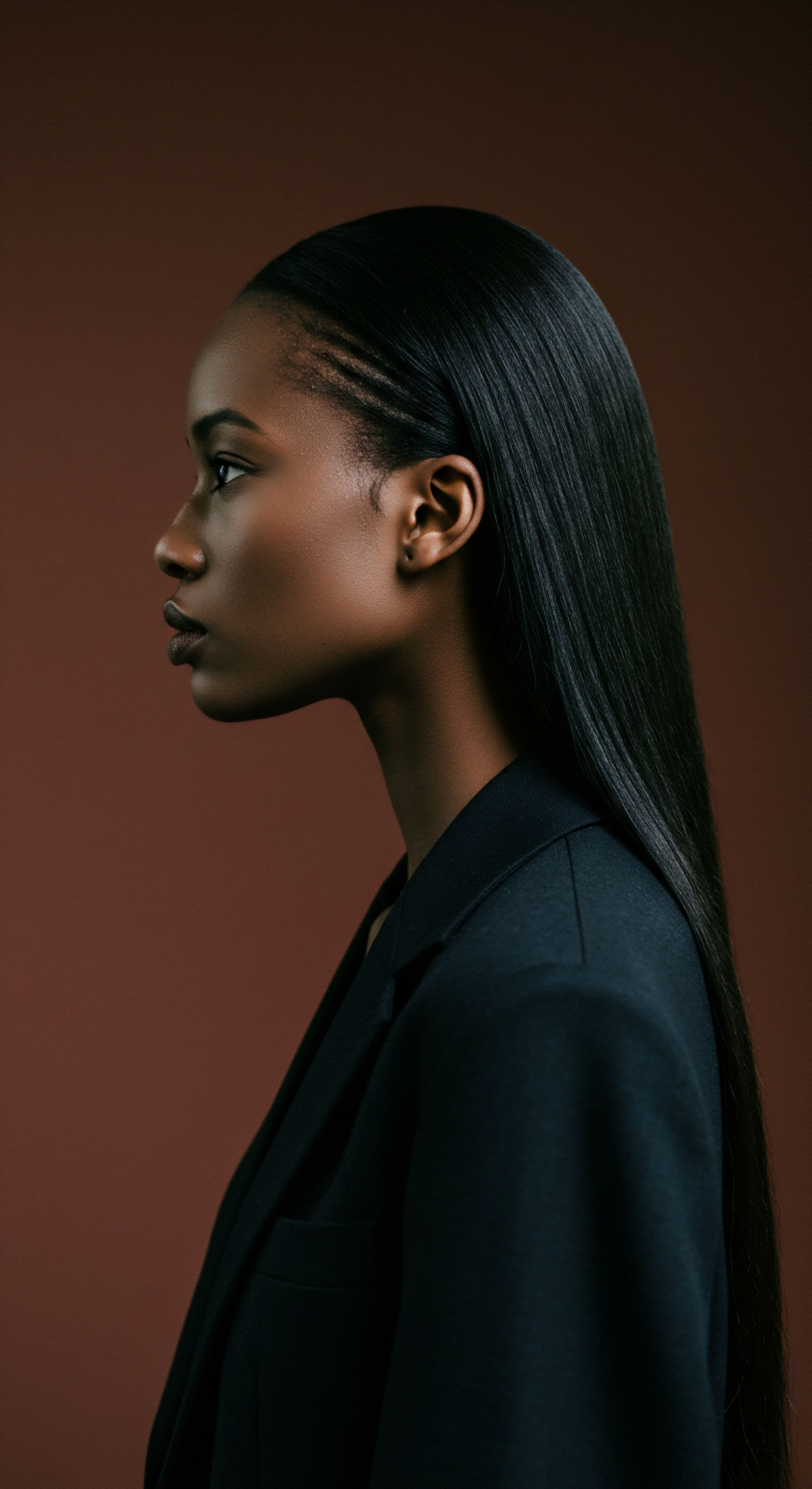
Roots
The story of hair, particularly textured hair, is not simply one of surface appearance. It speaks to ancient whispers of identity, to the enduring resilience of self, and to the very architecture that allows each strand to unfurl in its distinct expression. When we speak of heat styling, we are not merely discussing a fleeting change in form; we are engaging with the profound inner workings of hair, its foundational elements, and how thermal energy redefines its very being.
To truly grasp the implications of a heated tool upon a coil or a wave, we must first descend into the microscopic realm, where proteins align and bonds hold fast, dictating the hair’s inherent inclinations. This journey into the hair’s core reveals why some structures readily yield to warmth, while others resist, sometimes with lasting consequences.

Hair Anatomy and Its Response to Warmth
Each hair strand, seemingly simple to the eye, is a complex biological marvel. At its heart lies the Cortex, a bustling city of keratin proteins, spiraled into alpha-helices. These protein chains are held together by various bonds, most notably the strong Disulfide Bonds, but also weaker Hydrogen Bonds and ionic bonds.
Surrounding this cortex is the Cuticle, a protective outer layer composed of overlapping, scale-like cells, much like shingles on a roof. The medulla, present in some hair types, forms the innermost core, though its exact function remains a subject of ongoing study.
When warmth meets hair, a delicate dance begins. Hydrogen bonds, responsible for hair’s temporary shape and its susceptibility to humidity, are the first to respond. These bonds, easily broken by water or warmth, reform as the hair cools and dries, setting the new configuration. This explains why a humid day can undo a meticulously styled look, or why a simple blow-dry can temporarily straighten curls.
The hair’s inherent structure, particularly its internal bonds and outer cuticle, dictates its vulnerability and response to thermal manipulation.
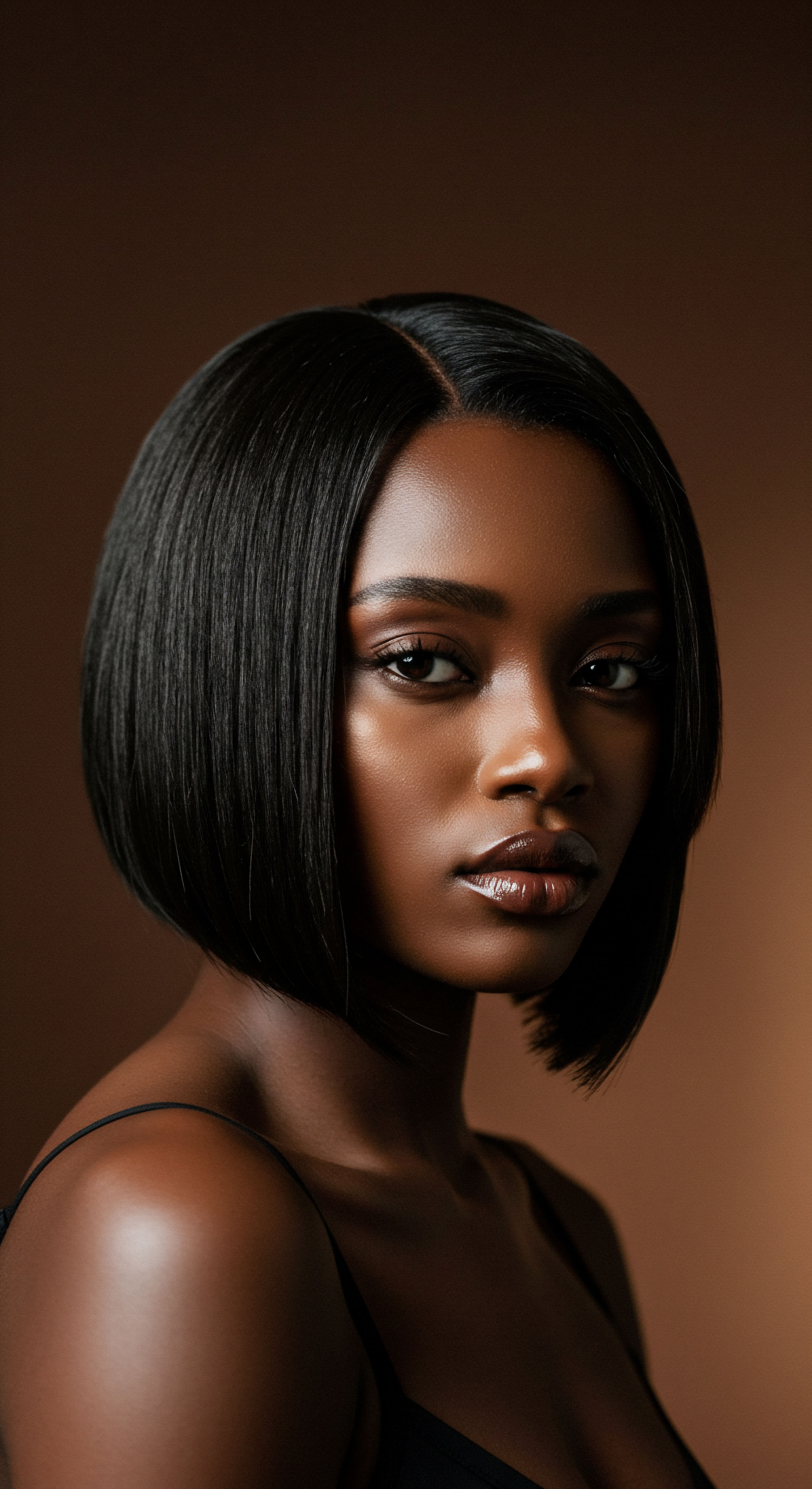
The Keratin Backbone and Thermal Alteration
Keratin, the primary protein composing hair, possesses a natural twist, an alpha-helix configuration. Research indicates that temperatures surpassing 150°C can begin to alter this fundamental structure, transforming alpha-keratin into beta-keratin. This change contributes to weakening the hair, diminishing its elasticity, and making it more susceptible to damage.
Furthermore, heat exceeding 230°C can initiate the breakdown of Disulfide Bridges, the robust covalent chemical bonds that grant hair its strength and elasticity, playing a vital role in maintaining its shape. Once these disulfide bonds are broken, they are often unable to repair themselves, resulting in permanent alterations to the hair’s structure.
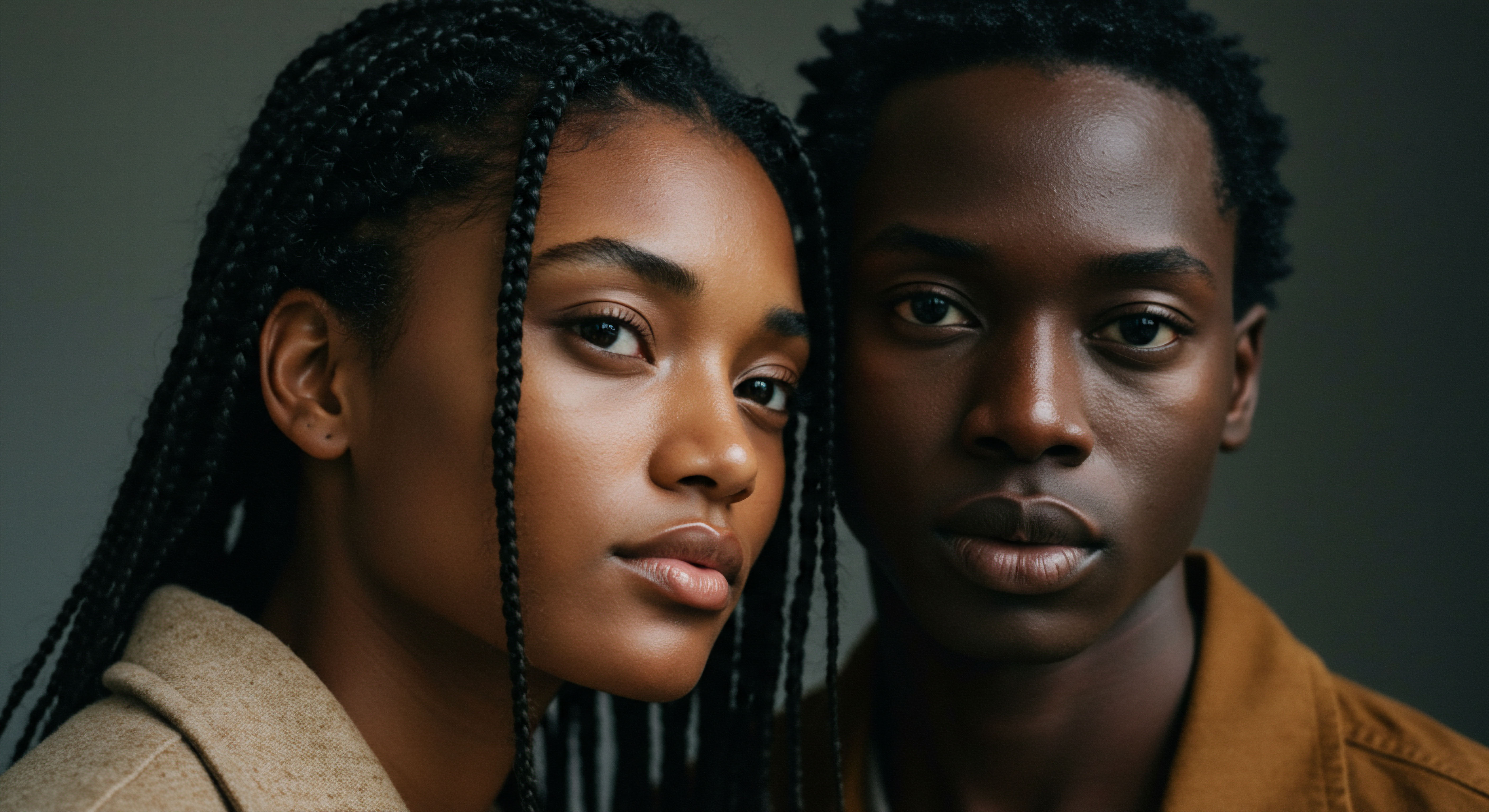
How Hair Types Differ Under Thermal Influence
The diversity of hair types, particularly within textured hair, means a uniform approach to heat styling falls short. The very shape of the hair follicle influences the curl pattern. Curly and coily hair, for example, frequently result from hook-shaped hair follicles, allowing cysteine residues to come into close proximity and form more disulfide bonds, thus creating greater texture.
Straight hair, in contrast, typically has round follicles, where cysteines are not positioned closely enough to form these texturizing disulfide bonds. This difference in inherent structure means textured hair often presents a greater surface area, making it more prone to moisture loss and potentially more susceptible to thermal injury.
A study comparing the effects of different temperature treatments on curly hair tresses revealed a compelling distinction. When curly hair was straightened fifty times at 185°C, its capacity to revert to its natural curl pattern remained unaffected. However, applying a styler at 220°C for the same number of repetitions caused a significant reduction in curl reversion, with fibers shifting towards less curly types.
This data suggests that while 185°C may permit temporary styling without lasting structural compromise, 220°C begins to inflict irreversible damage to the cortex, rendering the hair less stiff and more prone to breakage, thereby inhibiting its natural curl memory. This distinction highlights a critical temperature threshold for preserving the integrity of curly hair during thermal styling.
Consider the following table outlining how various structural elements of hair respond to increasing temperatures:
| Structural Element Hydrogen Bonds |
| Temperature Range (Celsius) Below 100°C |
| Observed Thermal Response Temporary breakage and reformation, allowing for temporary styling. |
| Structural Element Free Water Content |
| Temperature Range (Celsius) Up to 140°C |
| Observed Thermal Response Progressive loss of free water; modifications reversible. |
| Structural Element Alpha-Keratin Structure |
| Temperature Range (Celsius) Above 150°C |
| Observed Thermal Response Transformation into beta-keratin, reducing elasticity. |
| Structural Element Cuticle Scales |
| Temperature Range (Celsius) Above 140°C |
| Observed Thermal Response Folding and gradual disappearance of scales, increased porosity. |
| Structural Element Disulfide Bonds |
| Temperature Range (Celsius) Above 230°C |
| Observed Thermal Response Breakdown of covalent bonds, leading to permanent structural damage. |
| Structural Element These thresholds underscore the varying degrees of structural compromise hair experiences with rising heat. |
The interaction between heat and hair is not a simple linear progression of change. Instead, it involves a cascade of molecular events, each contributing to the hair’s ability to maintain its form or, conversely, to succumb to lasting alteration. The intrinsic design of each strand, from its protein composition to its outer protective layers, dictates its resilience when confronted with the powerful energy of heat.

Ritual
Stepping from the foundational understanding of hair’s internal workings, we now turn our gaze to the daily and periodic practices that shape our hair’s lived experience. The act of heat styling, for many, is more than a mere technique; it is a ritual, a practiced motion that can bring forth a desired appearance, a sense of readiness for the day. Yet, within this familiar routine lies a spectrum of outcomes, from temporary transformations to irreversible changes.
How then, do we approach this ritual with discernment, recognizing the delicate balance between desired style and sustained hair well-being? This section seeks to shed light on the applied wisdom of heat styling, acknowledging its role in our lives while offering pathways toward gentler, more mindful practices.

The Practice of Thermal Reconditioning
Thermal reconditioning, often synonymous with permanent straightening, represents a more intense form of heat styling. This process involves chemical agents that break down the hair’s disulfide bonds, followed by the application of heat to restructure the hair into a straight form. The heat then helps to set these newly formed bonds.
While offering lasting straightness, this method significantly alters the hair’s original architecture, making it particularly vulnerable to subsequent thermal exposure. The integrity of the hair relies heavily on the strength of its disulfide bonds, and their intentional breakage, even with the goal of reformation, compromises the hair’s inherent robustness.
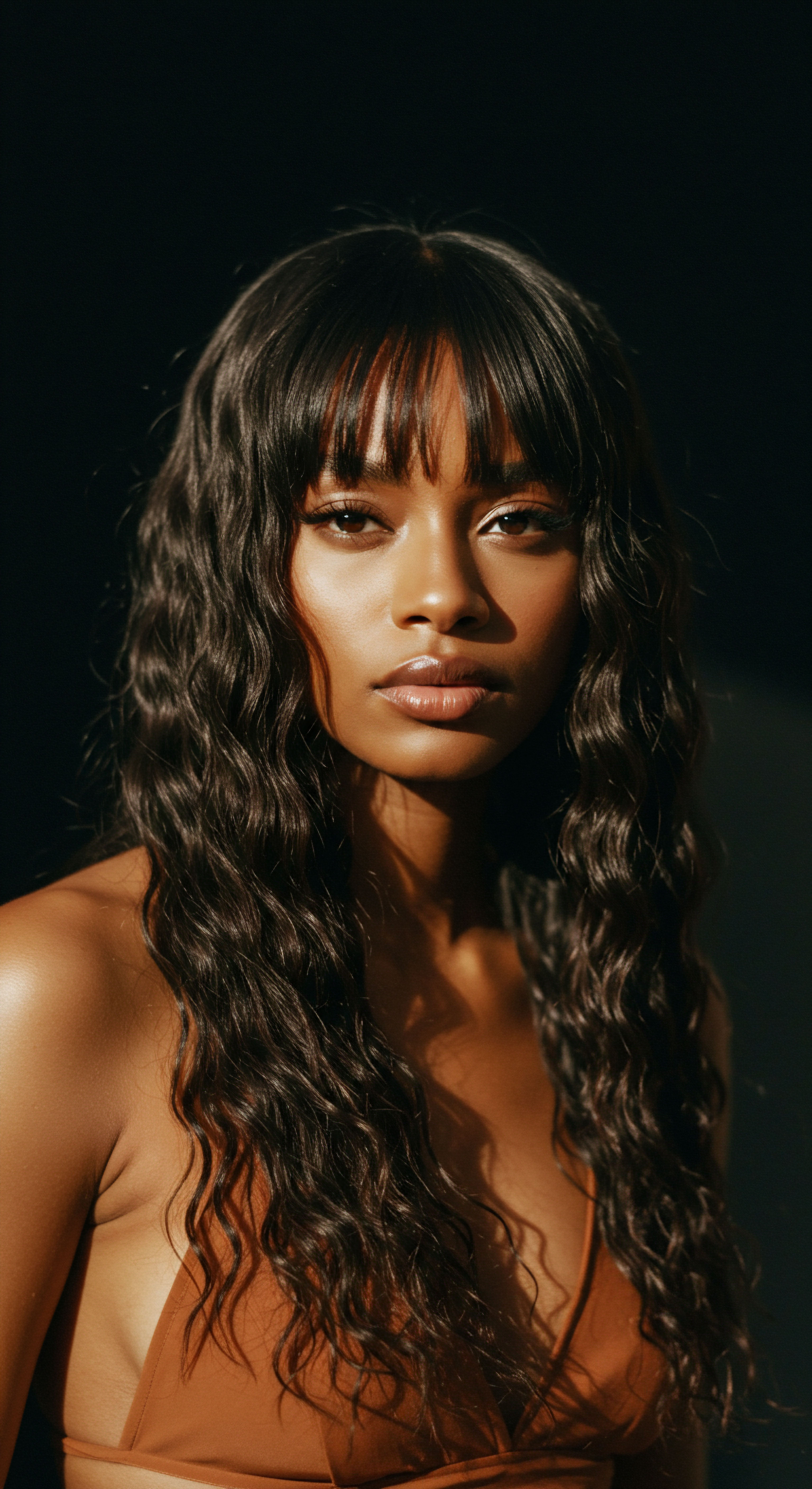
Heat Styling Tools and Their Distinct Impacts
The array of heat styling tools available each imparts warmth in a distinct manner, eliciting varied responses from the hair fiber.
- Blow Dryers ❉ These tools utilize hot air to dry and partially straighten hair. While generally less damaging than direct contact tools, prolonged exposure to high temperatures or incorrect technique (holding the dryer too close, concentrating heat on one section) can still lead to moisture loss and cuticle damage. For textured hair, a diffuser attachment can disperse air evenly, reducing direct impact and preserving curl patterns.
- Flat Irons ❉ Flat irons apply direct, conductive heat to the hair, pressing it between heated plates. This intense, direct contact is highly effective at straightening, but also carries the greatest risk of thermal injury. The effectiveness of flat irons in styling is primarily due to the “cohesive set” that occurs through the breaking and reformation of hydrogen bonds in hair proteins. This rearranged bond network remains stable until exposure to humid conditions or washing.
- Curling Irons and Wands ❉ Similar to flat irons, these tools apply direct heat to reshape the hair. The damage potential correlates with temperature settings, duration of contact, and the frequency of use. Higher temperatures can lead to significant structural changes, particularly in the cortex, making hair less stiff and more prone to breakage.
Mindful application of heat, paired with an understanding of tool mechanics, shapes the immediate and lasting health of each hair strand.
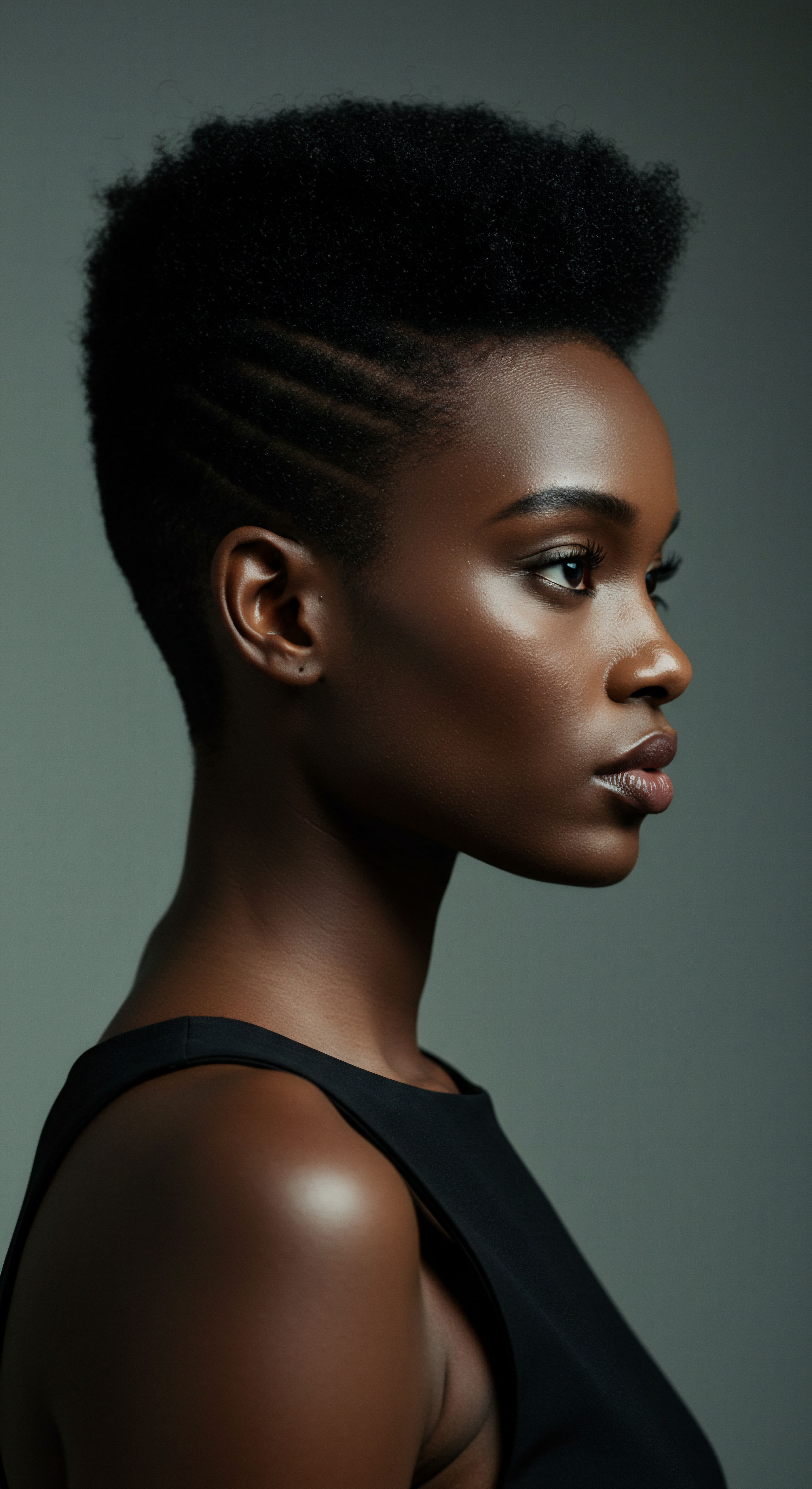
Safeguarding Hair from Thermal Adversity
Protecting hair from the rigors of heat styling is not an afterthought; it is an essential component of any regimen involving thermal tools. This involves a multi-pronged strategy that begins long before the heat is applied.

Pre-Styling Protocols
The foundation of thermal defense rests on proper preparation.
- Cleansing and Conditioning ❉ Hair that is clean and well-conditioned responds better to styling and is inherently more resilient. A deep conditioner can replenish moisture lost from previous styling or environmental stressors, providing a supple base.
- Moisture Balance ❉ Ensuring the hair has an optimal moisture content before heat application is vital. Overly wet hair can experience a “boiling” effect internally, while excessively dry hair can scorch more readily. Hair that is dehydrated after heat exposure loses water molecules bound to keratin proteins, modifying its protein structure.
- Thermal Protectants ❉ These products form a protective barrier around the hair shaft, helping to distribute heat more evenly and reducing direct thermal assault. They often contain silicones, polymers, or hydrolyzed proteins that can temporarily mend cuticle scales and reduce friction. The efficacy of these products is in their ability to minimize the rate of heat transfer and to offer a sacrificial layer that absorbs some of the thermal energy.

Mindful Application and Temperature Awareness
The way heat is applied is as significant as the product used.
Research from Purdue University, led by Assistant Professor Tahira Reid, has aimed to provide empirical data on how heat moves through different hair types and the temperature at which permanent structural changes occur. Their studies investigate the “tipping point” temperature from which various hair types can no longer recover. While specific universal thresholds are still being refined, general consensus among experts suggests that maintaining styling temperatures below 185°C is ideal to minimize damage. Going beyond this point, especially towards 220°C and higher, can lead to significant structural compromise and irreversible curl loss for textured hair.
A study conducted on curly tresses revealed that straightening at 220°C fifty times resulted in a substantial shift to less curly types, indicating a permanent loss of the original curl pattern. Conversely, the same treatment at 185°C did not cause such a lasting change. This objective measurement underscores the importance of precise temperature control, particularly for those with textured hair who wish to preserve their natural curl memory. The study further found that the damage at 220°C was associated with the cortex becoming less stiff and more prone to breakage, suggesting a disruption of the molecular structure that prevents the hair from reverting to its natural state when exposed to water.
The choice of styling device also matters. Tools with intelligent heat control technology, which self-regulate to prevent excessive temperatures, can be a valuable consideration, particularly for textured hair, which is inherently more susceptible to damage due to its unique structure. For instance, certain air-based straighteners operate on high-pressure airflow rather than direct hot plates, which can potentially reduce the risk of thermal injury compared to traditional flat irons that can reach temperatures up to 450°C.
Regular trims are also a part of this ritual. Severely damaged ends, which appear rough, dry, and dull, are a sign of compromised cuticle layers and potential protein degradation. Removing these sections prevents further splitting and breakage from traveling up the hair shaft, preserving the overall health of the strands.
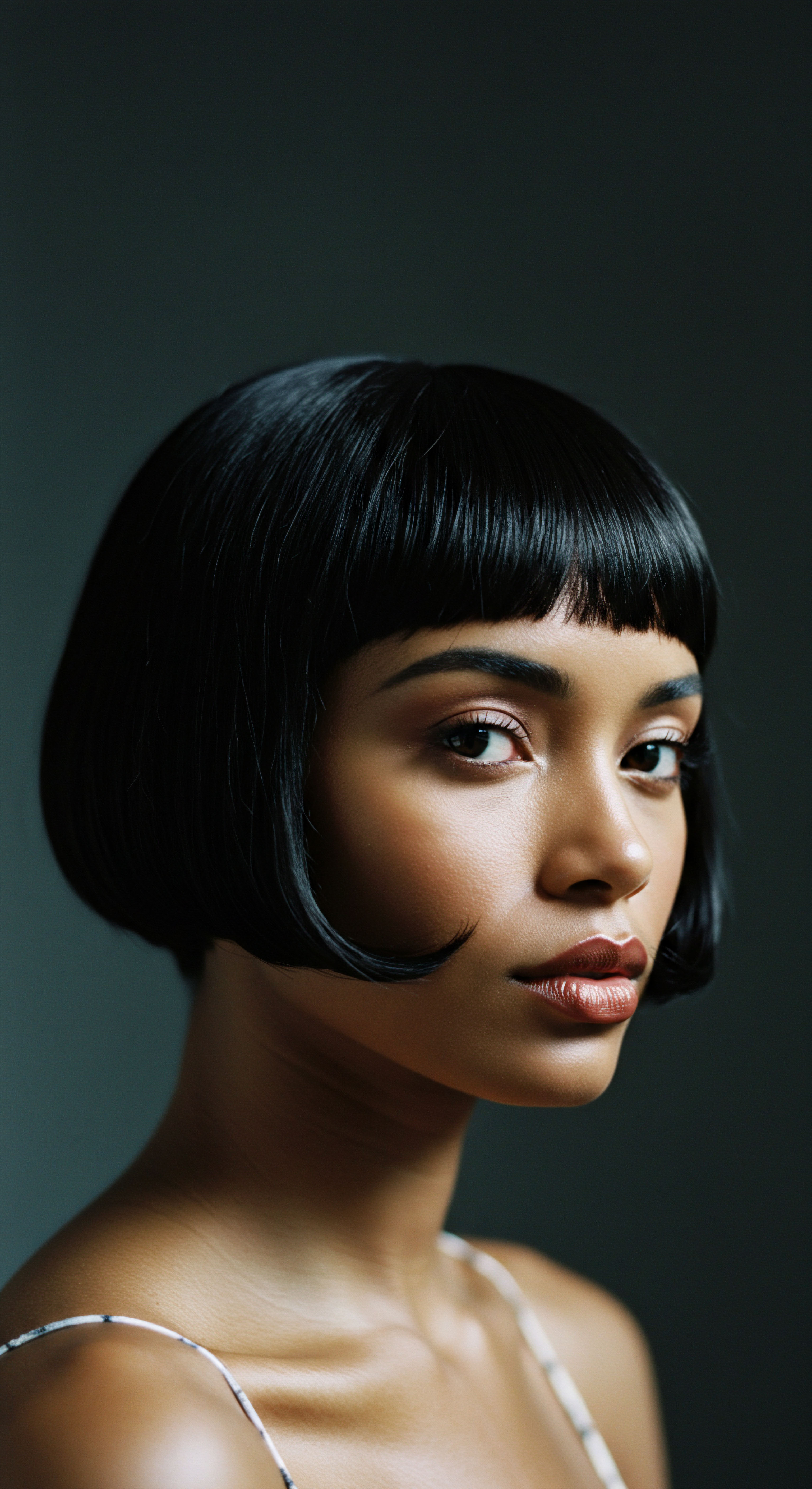
Relay
Having journeyed through the foundational science and the mindful practices of heat styling, we now approach a deeper, more reflective consideration of its place within the broader context of hair, culture, and self. The influence of heat styling extends beyond mere aesthetics; it touches upon deeply ingrained cultural narratives, perceptions of professionalism, and the intricate interplay of biological realities with societal expectations. How does the very act of altering hair’s natural form, particularly for textured hair, echo through personal identity and collective heritage? This section aims to illuminate these complex connections, drawing upon research and cultural perspectives to offer a more profound appreciation of the forces at play.

Cultural Currents and Hair Alteration
For individuals with textured hair, the decision to heat style often carries a weight of cultural and historical significance. Historically, straightening techniques on Black hair, whether through hot combs or chemical relaxers, have been intertwined with societal pressures and Eurocentric beauty standards. The desire for straightened hair can stem from a variety of factors, including a perceived need to conform in professional settings or to meet prevailing beauty ideals. This historical context means that discussions around heat styling for textured hair are rarely purely about technique; they are often layered with considerations of identity, acceptance, and resistance.

The Perilous Pursuit of Straightness
The pursuit of straightened hair, particularly when achieved through frequent and high-temperature thermal styling, carries a significant risk for textured hair. Afro-textured hair, due to its unique helical structure and elliptical cross-section, can be inherently more vulnerable to damage. Its tight coils mean that natural oils struggle to travel down the hair shaft, leading to greater dryness, and its natural bends create points of weakness that are susceptible to breakage when subjected to mechanical stress and intense heat.
A study from 2018 investigating curl reversion and damage found that curly hair tresses straightened fifty times at 220°C showed a significant shift to less curly types, indicating a permanent loss of their original curl pattern. This was contrasted with tresses straightened at 185°C, which showed no statistically significant difference in their ability to revert to their natural curl pattern. This finding is particularly salient for textured hair, where the loss of curl memory signifies not just a cosmetic change, but a structural compromise that cannot be reversed. The study concluded that the damage at 220°C affected the cortex, making the fibers less stiff and more prone to breakage, hindering their natural shape memory.
The decision to alter hair’s natural form, especially for textured hair, frequently intersects with deep cultural meanings and societal expectations.

The Microscopic Narrative of Damage
Beyond the visible signs of heat damage—such as split ends, dryness, and limpness—a more insidious narrative unfolds at the microscopic level. High temperatures induce changes within the hair’s protein structure, particularly the keratin. Temperatures exceeding 140°C result in profound and irreversible structural modifications, including changes in the appearance and gradual disappearance of cuticle scales. This compromises the hair’s primary protective barrier, leaving the inner cortex exposed and vulnerable.
Moreover, extreme heat can lead to the decomposition of hair chromophores, specifically tryptophan, and its oxidation products. This can result in discolored hair, particularly noticeable in highly porous strands. The internal water content of hair also plays a critical role.
High temperatures cause water molecules bound to keratin proteins to evaporate rapidly, leading to dehydration and potential cracking of the cuticle. This evaporation can also create air bubbles between cuticle scales, further weakening the hair and increasing its susceptibility to breakage.

The Long-Term Ramifications of Repeated Heat Exposure
Repeated exposure to high heat, especially without adequate protection, can lead to a cumulative effect on hair health. This accumulation of damage manifests as:
- Reduced Elasticity ❉ Hair loses its ability to stretch and return to its original state, making it more prone to snapping.
- Increased Porosity ❉ Damaged cuticles lift, allowing moisture to enter and exit rapidly, leading to frizz and dryness.
- Permanent Curl Loss ❉ For textured hair, the sustained alteration of hydrogen and disulfide bonds can result in a permanent straightening of the curl pattern, often referred to as heat damage, where the hair simply loses its ability to coil.
- Dullness and Roughness ❉ The compromised cuticle surface scatters light rather than reflecting it smoothly, leading to a lack of shine and a rough texture.
The discussion surrounding heat styling for textured hair also intersects with broader conversations about hair discrimination and the CROWN Act, which aims to prevent discrimination based on hair texture and protective styles. The societal pressure to straighten textured hair for professional acceptance, for instance, underscores the deeply personal yet public nature of hair choices. This cultural context means that providing accurate, science-backed information about heat styling is not merely about cosmetic advice; it is about empowering individuals to make informed decisions that align with their personal well-being and cultural affirmation, free from external pressures.
While heat styling offers temporary versatility, a deeper scientific and cultural awareness reveals its potential for lasting alterations. Understanding the thresholds of thermal tolerance and the microscopic shifts that occur within the hair fiber equips us to navigate this ritual with greater wisdom, honoring both personal style and the inherent resilience of our strands.

Reflection
As we conclude our exploration of hair structure and its interplay with heat styling, a profound appreciation for the hair’s intricate design settles upon us. Each strand, a testament to nature’s artistry, carries within it a story of resilience, adaptation, and vulnerability. The dialogue between hair and warmth is not a simple one, but a complex conversation of bonds shifting, proteins altering, and moisture departing. To truly care for our hair, particularly textured hair, requires more than just product application; it demands a listening ear to its whispers, an understanding of its deep-seated architecture, and a gentle hand in its styling.
This journey into the microscopic and the cultural invites us to view our hair not merely as an accessory, but as a living canvas, deserving of respect, informed choices, and practices that celebrate its unique vitality. May our choices reflect a deep reverence for the hair we wear, recognizing its profound connection to who we are, and how we choose to present ourselves to the world.

References
- Harper, C. et al. “Thermal styling ❉ Efficacy, convenience, damage tradeoffs.” ResearchGate, 2024.
- Gittens, S. et al. “Curl Reversion and Damage ❉ The Effect of Different Temperature Treatments on Hair.” Hilaris Publisher, 2018.
- Bories, M.F. Martini, M.C. Et, M.F. Cotte, J. “Effects of heat treatment on hair structure.” International Journal of Cosmetic Science, 1984.
- Collins Jackson, K. “9 Myths About Afro Textured Hair & Heat Styling Totally Busted By Curl Experts.” Bustle, 2016.
- “Study Investigates Which Levels of Heat Cause Hair Damage.” Belgravia Centre, 2015.
- “Thermal protection ❉ what is it and how to formulate efficient hair products?” Seppic, 2023.
- Ettlinger, M. et al. “The effects of water on heat-styling damage.” ResearchGate, 2014.
- Gittens, S. et al. “Curl Reversion and Damage ❉ The Effect of Different Temperature Treatments on Hair.” ResearchGate, 2024.
- Robbins, C.R. Kelly, R. “An ex vivo Comparison of the Tensile-Strengthening Properties of Protein Derivatives on Damaged Hair.” UAL Research Online, 2013.
- Tinoco, A. et al. “Crystallin Fusion Proteins Improve the Thermal Properties of Hair.” PubMed Central, 2018.
- “The Silent Battle ❉ Heat And Chemical Damage To Afro Hair.” Fulham Scalp And Hair Clinic, 2023.
- Ribeiro, A.S. et al. “Human Hair and the Impact of Cosmetic Procedures ❉ A Review on Cleansing and Shape-Modulating Cosmetics.” MDPI, 2022.
- Jones, C. “Chemistry of Wellness ❉ Hair and Hair Care.” The Journal of the American Chemical Society, 2023.
- Adewunmi, M. “What Black Hair Experts Really Think About The Dyson Airstrait Backlash.” Refinery29, 2024.
- “Hair Discrimination FAQ.” Legal Defense Fund, 2024.
- “Controversy around chemical hair relaxers grows as more research shows link to some cancers.” WGBH, 2024.
- Haskin, A. Aguh, C. Okoye, G.A. “Clinical and anthropological perspectives on chemical relaxing of afro-textured hair.” ResearchGate, 2017.
- Reid, T. “How Heat Affects Human Hair ❉ Thermal Characterization and Predictive Modeling of Flat Ironing Results.” Purdue e-Pubs, 2015.